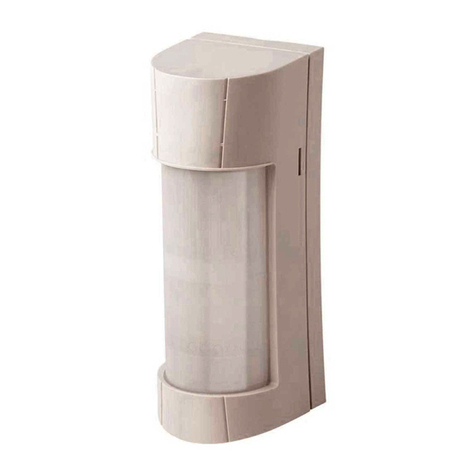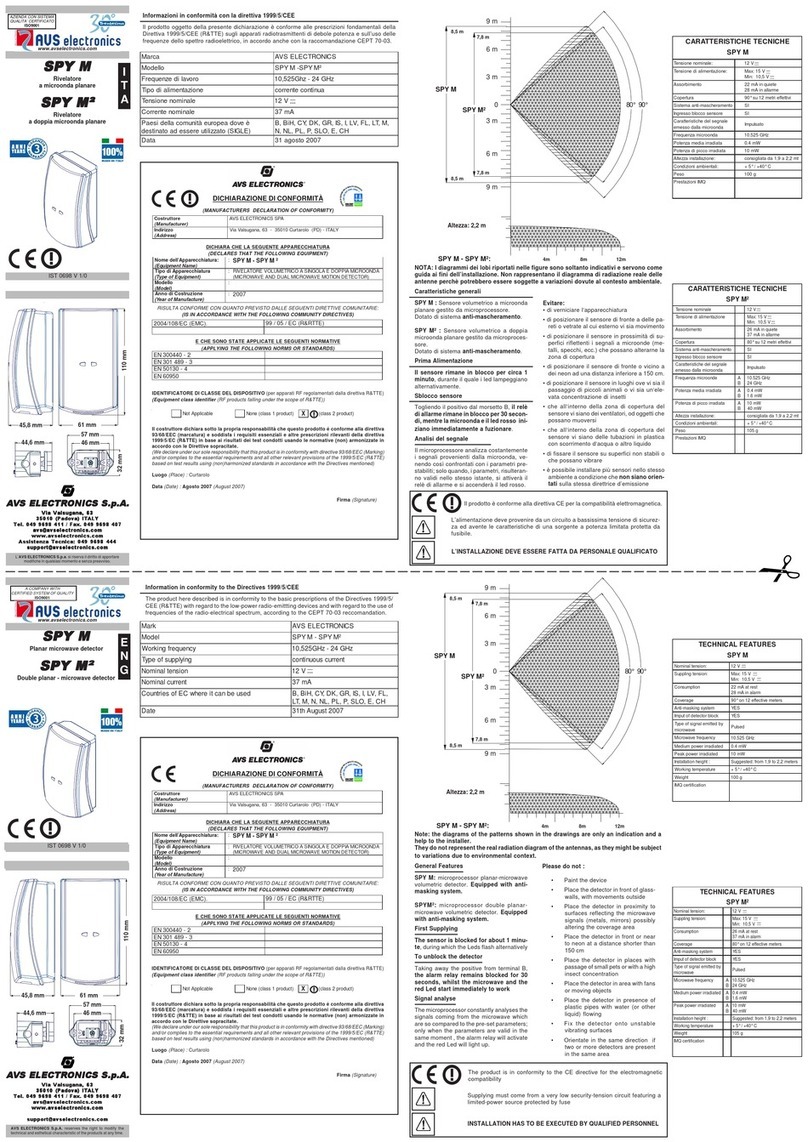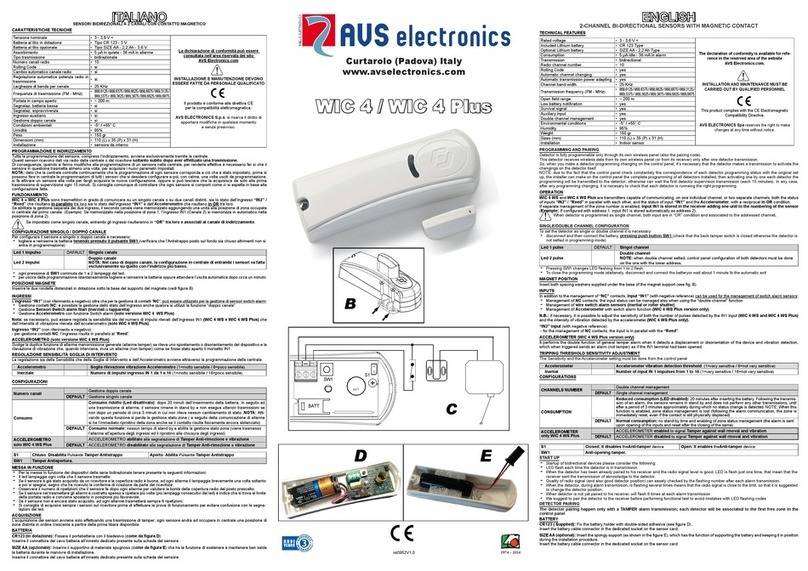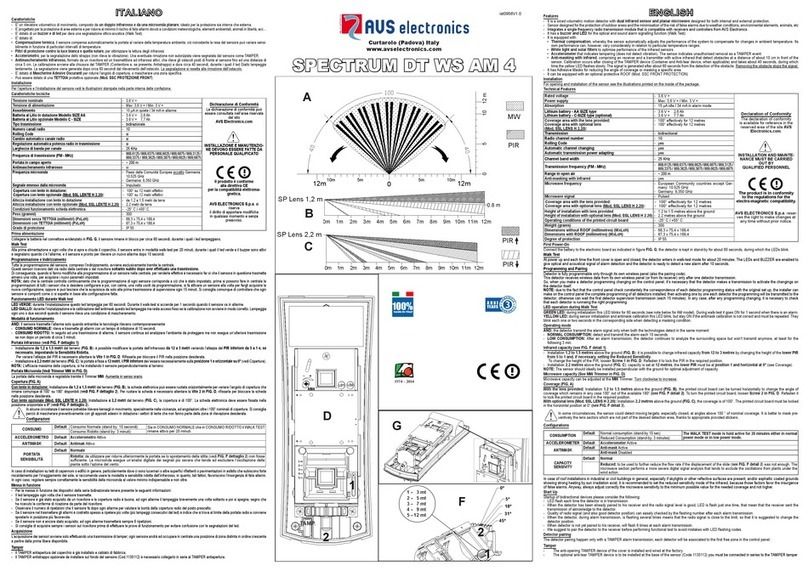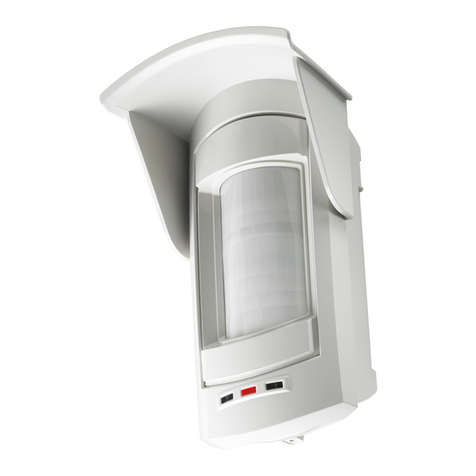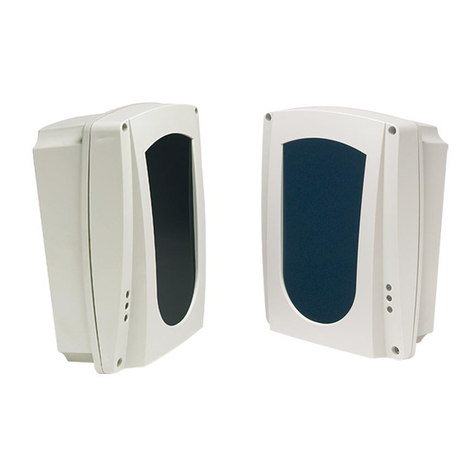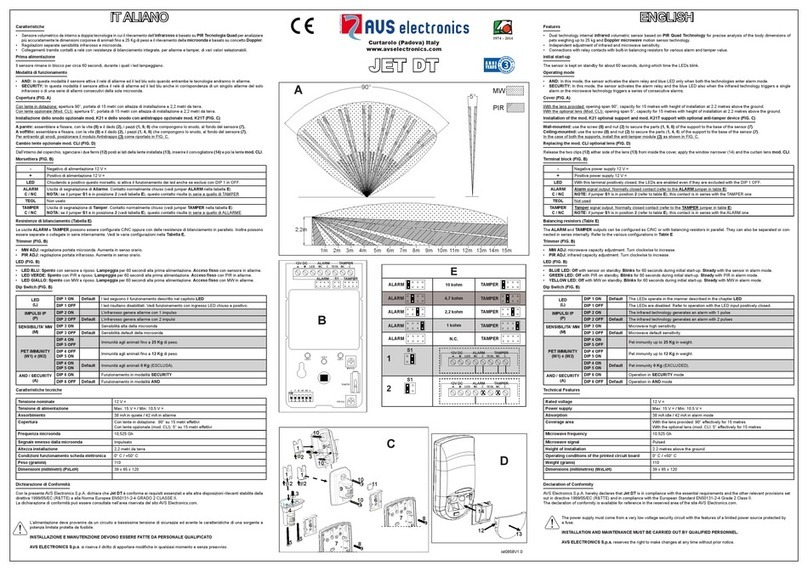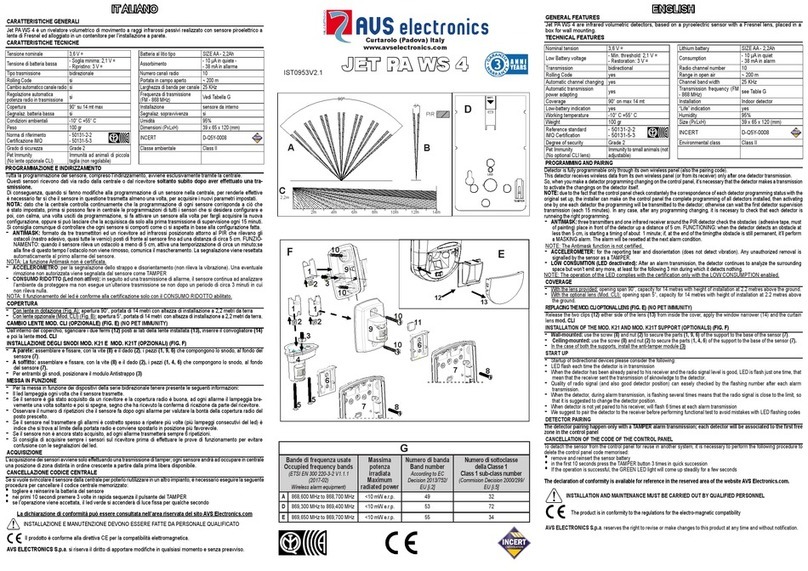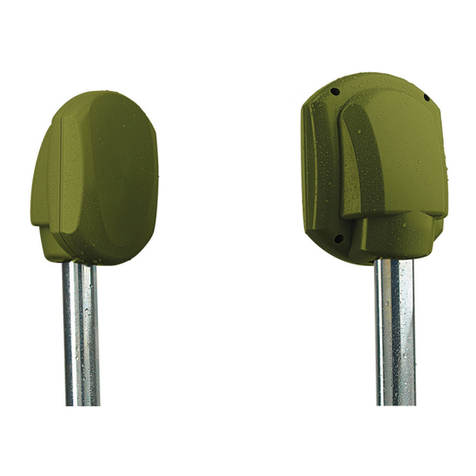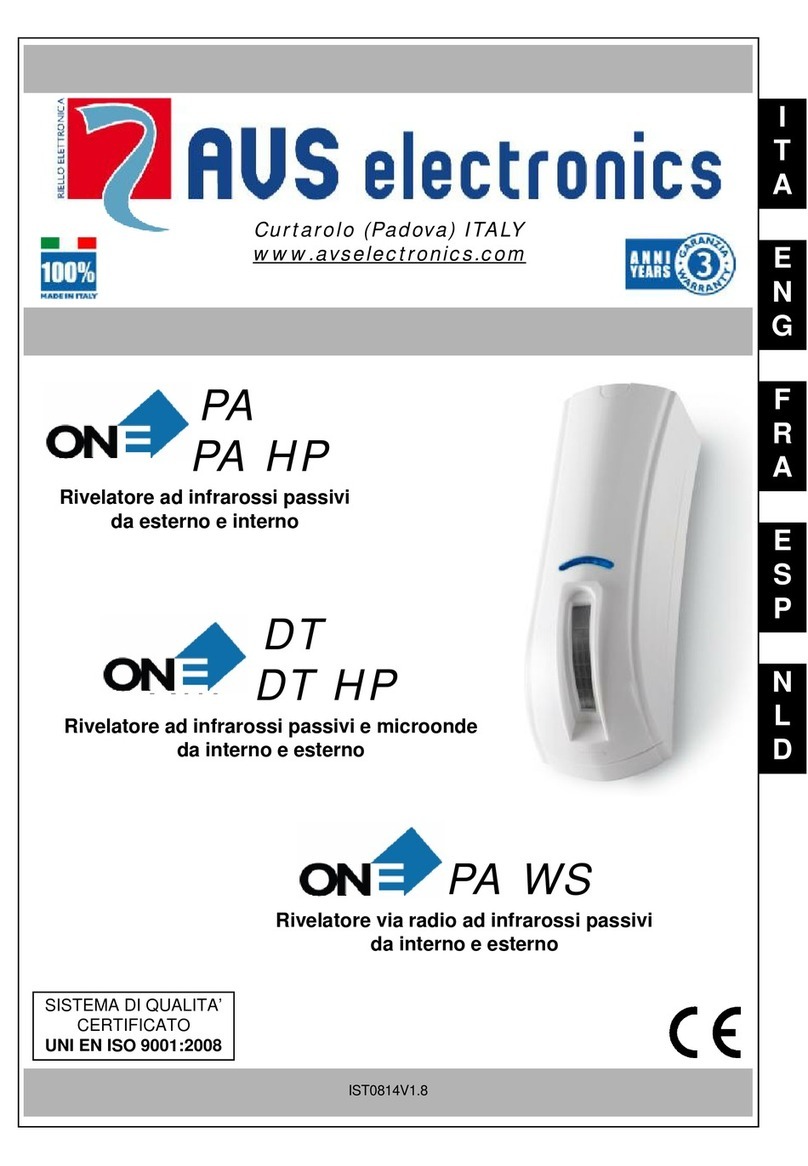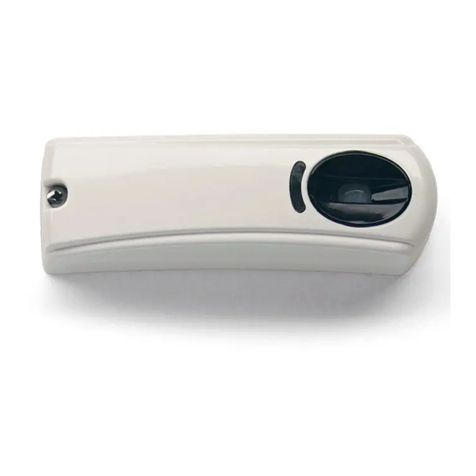
- 21 - IST0570V3.1
-Consideringthatthelongeristheprotectedrange,the longeristhe beamconcernedbysmoke,
itwould bebetter tosetthesensitivitylevelaccordingto distancebetween beamand reflector,
followingindications shownin thechartbelow.
Once calibration is made, take off the adjusting mirror BF TEST before closing with
cover.
The4 fixingholes onthe covercanbe“hidden”usingthescrew-covers givenwithin.
Working Mode “Normal”
HerearetheindicationsgivenbythethreeLedsontheleft:
–during normal working: greenLed flashesaboutevery2seconds,redLedisoff,yellowLed
isoff.
–during alarm: as soon as the beam detects presence of smoke, green Led will flash quickly,
redLedandyellowLedwillbeoff.Afterabout40secondsiftheeventcausingthealarmcontinues,
green Led will keep on flashing quickly, red Led will be on and alarm relay will be activated,
yellowLed willbe off.
Whenthe eventcausing thealarm isover, greenLed willstart againflashingevery2seconds,
redLedwillremainonandalarm relaywill remainactivated.
Thealarm signallingisreset:
–if the output +F connected to a conventional fire control unit (Jumper S9 closed) has
been used for the alarm signalling,theresetwillbe automaticresetting thecontrol unit.
–Forall otherconnection modes (JumperS9 opened),theresetis madetakingoffsupplying
frombarrierforfewseconds.
–Inanycase, if the module BR100 is used, resetcan alsobemade byuse ofthemechanical
key onboard.
–In case of fault condition: as soon as the beam detects a sudden drop of signal, green Led
willflash quickly,redLedwillbe off,yellowLedwillflash quickly.After about1minute,if thethe
eventcausingit persists,green Ledwill keeponflashing quickly,yellow Ledwillbefixon and
concernedrelay isactivated.
–Fault signalling is automatically reset as soon as the event stops. The beam is automatically
backin conditionof“normalworking”.
Byuseofremotemodule BR100following indicationswill beavailable:
DISPLAY
–during normal working: a value between 0 and 9 is visualized, corresponding to the signal
receivedduring lastcalibration (manualor automatic).
–in case of alarm: letterA isvisualized.
–in case of fault condition: letter Fis visualized.
LED BAR
–presence of a strong reflection: Led 7 or 8 on.
–during normal working: Led 5 or 6 on.
–in case of alarm or fault condition : one of the Leds under 5 on.
Ex.:ifLed 3is on,itshows thatthesignal islower than50%compared tothe best signal.
leveL foegatnecreP gniksam dnamaebneewtebecnatsiD rotcelfer 1PID 2PID
1 %52 sretem53ot5morF NO NO
2%03 sretem05ot01morF FFO NO
3 %04 sretem001ot03morF NO FFO
GNINRAW GNINRAW GNINRAW GNINRAW GNINRAW gnitteshctiws-pideht: FFO-FFO .desuebREVENtsum
